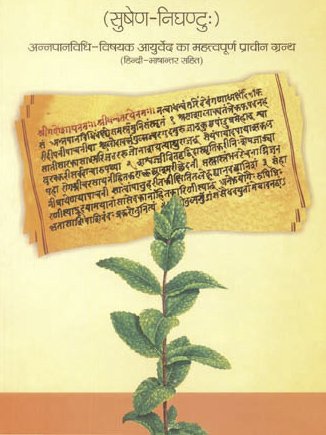Sour: 2 definitions
Introduction:
Sour means something in Hinduism, Sanskrit, biology. If you want to know the exact meaning, history, etymology or English translation of this term then check out the descriptions on this page. Add your comment or reference to a book if you want to contribute to this summary article.
In Hinduism
Ayurveda (science of life)
Source: ORA: Amanaska (king of all yogas): (ayurveda)The Sour taste is denoted by the Sanskrit term Amla-Rasa, according to the Kāśyapasaṃhitā (Khilasthāna, verse 9.43-45ab) in a chapter on abdominal swelling caused by vitiation of the blood.—Accordingly, “Listen to the cause of that which produces the cravings [of a seemingly pregnant woman with raktagulma]. Generally, there is desire for those tastes which cause an increase of the bodily constituents because of the true similarity of their origin. [When] the vitiated blood has a Vāta or Pitta [imbalance] and is accumulating, it fuels desire for tastes such as [those which are] acrid, sour (amla), salty and so on”.

Āyurveda (आयुर्वेद, ayurveda) is a branch of Indian science dealing with medicine, herbalism, taxology, anatomy, surgery, alchemy and related topics. Traditional practice of Āyurveda in ancient India dates back to at least the first millenium BC. Literature is commonly written in Sanskrit using various poetic metres.
Biology (plants and animals)
Source: Google Books: CRC World Dictionary (Regional names)Sour in India is the name of a plant defined with Betula alnoides in various botanical sources. This page contains potential references in Ayurveda, modern medicine, and other folk traditions or local practices It has the synonym Betulaster acuminata Spach (among others).
Example references for further research on medicinal uses or toxicity (see latin names for full list):
· Plantae Asiaticae Rariores, or ‘Descriptions and figures of a select number of unpublished East Indian plants’ (Wallich) (1830)
· Das Pflanzenreich (1904)
· Linnaea (1832)
· Nouv. Mém. Soc. Imp. Naturalistes Moscou (1861)
· Annales des Sciences Naturelles, Botanique, (1841)
· Prodromus Florae Nepalensis (1825)
If you are looking for specific details regarding Sour, for example side effects, pregnancy safety, health benefits, diet and recipes, extract dosage, chemical composition, have a look at these references.

This sections includes definitions from the five kingdoms of living things: Animals, Plants, Fungi, Protists and Monera. It will include both the official binomial nomenclature (scientific names usually in Latin) as well as regional spellings and variants.
See also (Relevant definitions)
Starts with (+12): Sour cherry, Sour crown grass, Sour dock, Sour fig, Sour grass, Sour greens, Sour gruel, Sour lime, Sour orange, Sour paspalum, Sour plum, Sour plum of the bushveld, Sour thorn, Sour top, Sour tumbla, Sour weed, Sour-gum, Sour-sour, Soura, Sourberry.
Ends with: Nousour, Sour-sour, Wild sour.
Full-text (+639): Amla, Shukta, Kanjika, Mastu, Kulmasha, Shrighana, Kunjala, Amlarasa, Sauvira, Godhumasambhava, Suviramla, Khatta, Kancika, Unnaha, Amlika, Amlodgara, Kundagolaka, Siddhajala, Shadrasa, Dhanyamla.
Relevant text
Search found 148 books and stories containing Sour; (plurals include: Sours). You can also click to the full overview containing English textual excerpts. Below are direct links for the most relevant articles:
Rasa Jala Nidhi, vol 3: Metals, Gems and other substances (by Bhudeb Mookerjee)
Part 14 - Dietary presecriptions and prohibitions when taking iron < [Chapter IV - Metals (4): Lauha (iron)]
Part 1 - Characteristics of Varta-loha < [Chapter X - Mixed metals (3): Varta-loha]
Part 3 - Incineration of silver < [Chapter II - Metals (2): Raupya (silver)]
Rasa Jala Nidhi, vol 4: Iatrochemistry (by Bhudeb Mookerjee)
Part 3 - Unwholesome diet and deeds < [Chapter I - General health prescriptions]
Treatment for fever (147): Vidya-vallabha rasa < [Chapter II - Fever (jvara)]
Part 27 - Diet in diarrhoea < [Chapter III - Jvaratisara fever with diarrhoea]
Rasa Jala Nidhi, vol 5: Treatment of various afflictions (by Bhudeb Mookerjee)
Chapter 8 - Symptoms and treatment of Amlapitta (acidity and biliousness)
Chapter 14 - Symptoms and treatment of Arochaka (aversion to food)
Rasa Jala Nidhi, vol 2: Minerals (uparasa) (by Bhudeb Mookerjee)
Part 2 - Purification of shilajatu < [Chapter IV - Uparasa (4): Shilajatu or Shilajit (bitumen)]
Part 6 - Using haritala < [Chapter XII - Uparasa (13): Haritala (orpiment)]
Part 1 - Characteristics of Kasisa (sulphate of iron) < [Chapter X - Uparasa (11): Kasisa (sulphate of iron)]
Bhesajjakkhandhaka (Chapter on Medicine) (by Hin-tak Sik)
Internal Medicine (c): Disorders of Humours/Elements < [Chapter 5 - Diseases and Treatments in the Chapter on Medicine]
Internal Medicine (b): Wind Diseases < [Chapter 5 - Diseases and Treatments in the Chapter on Medicine]
Introduction < [Chapter 4 - Medicinal Substances in the Chapter on Medicine]
Satapatha-brahmana (by Julius Eggeling)
Kāṇḍa XI, adhyāya 1, brāhmaṇa 4 < [Eleventh Kāṇḍa]
Kāṇḍa I, adhyāya 6, brāhmaṇa 4 < [First Kāṇḍa]
Kāṇḍa II, adhyāya 4, brāhmaṇa 4 < [Second Kāṇḍa]
Related products
(+43 more products available)





